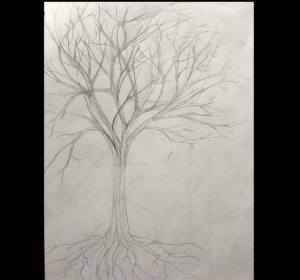Case Study: Homeopathic Treatment for Underdeveloped Breast Tissue in a 17-Year-Old Girl
Introduction:
In this case study, Dr. Parinita details the treatment of a 17-year-old girl with underdeveloped breast tissue. This condition, where one breast remained flat while the other developed normally, was successfully addressed using Pulsatilla, a homeopathic remedy known for its ability to balance emotional and physical health. The case demonstrates the holistic approach of homeopathy in treating unique and complex conditions.
Patient Background:
A 17-year-old girl visited Dr. Srivastava’s clinic on 12th June, accompanied by her mother, seeking treatment for an underdeveloped right breast. Her mother reported that while the left breast had developed normally and measured about 2 inches from base to nipple, the right breast was completely flat. The girl had no other health concerns at the time.
Physical Profile:
- Build: Tall, fair complexion, thin body
- Thermal Sensitivity: Sensitive to extreme temperatures, particularly heat
- Thirst: Low thirst, with occasional dribbling of saliva during sleep
- Perspiration: Scanty sweating
- Stool and Urine: Normal, no complaints
- Menstruation: Not yet started
- Food Preferences: Craved spicy foods
Mental and Emotional Profile:
The girl was described as shy, introverted, and soft-spoken. During the case-taking process, all questions were answered by her mother, as the girl was too reserved to speak much herself. According to her mother, she was emotionally sensitive and would cry frequently over small matters, though she would recover quickly. The girl preferred open, airy spaces and felt suffocated in closed rooms. She would cover herself with a blanket during sleep, indicating her desire for emotional comfort and protection.
Her temperament was marked by a degree of stubbornness, and despite her reserved nature, she excelled in academics.
Family History:
- Mother: Healthy, no significant health concerns
- Father: Prone to premature baldness
- Elder Sister: Prone to chilblains
Past Medical History:
The girl had measles at the age of 5, which was treated with conventional medicine. No other significant health issues were reported.
Case Analysis:
The combination of the girl’s emotional and physical characteristics strongly suggested a Pulsatilla constitution. The following key traits led to this diagnosis:
- Timid and introverted nature
- Sensitivity to closed spaces and emotional triggers
- Weeping disposition
- Saliva dribbling during sleep
- Stubborn, yet mild temperament
Pulsatilla is a well-known homeopathic remedy that is often prescribed for individuals who are emotionally sensitive, prone to crying, and have difficulty adjusting to emotional or environmental stress. Given these symptoms, Pulsatilla 200 was selected as the remedy for this case.
Treatment Approach and Follow-up:
Initial Treatment:
- 12th June: A single dose of Pulsatilla 200 was administered, followed by placebo for one month to observe the response.
First Follow-up:
- 11th July: The right breast, which was previously flat, now showed a slight protuberance. The left breast remained at 2 inches. Additionally, the dribbling of saliva during sleep had stopped. No further treatment was given, and the girl continued with the placebo for the next month.
Second Follow-up:
- 17th August: The right breast had grown further, now measuring 1 inch from the base to the nipple. The left breast remained the same size. A second round of placebo was given for 2 months to continue monitoring progress.
Third Follow-up:
- 21st October: The right breast continued to develop, now measuring 1 inch. The left breast had increased to 3 inches. At this stage, a second dose of Pulsatilla 200 was administered, followed by placebo for one month.
Fourth Follow-up:
- 15th September: Both breasts showed continued development. The right breast now measured 3 inches, while the left breast had grown to 4 inches. Placebo treatment was continued for another month.
Final Follow-up:
- 10th November: By this time, both breasts had reached almost equal size, measuring around 3 inches each. At this point, the treatment was deemed complete and discontinued.
Outcome and Conclusion:
By 10th November, the patient’s condition had significantly improved. Both breasts had developed symmetrically, and the previously underdeveloped right breast now measured approximately 3 inches, matching the left one. The emotional and physical health of the girl improved as well, with the cessation of the earlier symptoms such as drooling during sleep. The girl reported feeling better emotionally, with fewer mood fluctuations and more resilience.
This case highlights the efficacy of homeopathic treatment in addressing unique health concerns like uneven breast development. Pulsatilla, with its ability to address both emotional and physical imbalances, proved to be the right remedy in promoting healthy breast development in this young girl.
Current Status:
The girl, now fully recovered, continues to visit Dr. Parinita for routine follow-ups along with her mother and elder sister, who are also receiving homeopathic treatment. She is in good health, and both of her breasts are developing normally without any further complications.
Key Takeaways:
- Pulsatilla 200 successfully treated a case of underdeveloped breast tissue in a 17-year-old girl.
- Homeopathy provides a safe, holistic approach for treating physical and emotional imbalances, leading to natural growth and development.
- Emotional factors, such as shyness, introversion, and sensitivity, can play a key role in homeopathic treatment and contribute to overall health improvement.
This case underscores the power of homeopathy to address seemingly rare or unique health issues in a non-invasive, effective way, offering a natural solution for individuals experiencing delayed or uneven breast development.
Homeopathic treatment for underdeveloped breast, Pulsatilla remedy for breast development, uneven breast growth treatment, homeopathy for delayed puberty, emotional factors in physical development.



